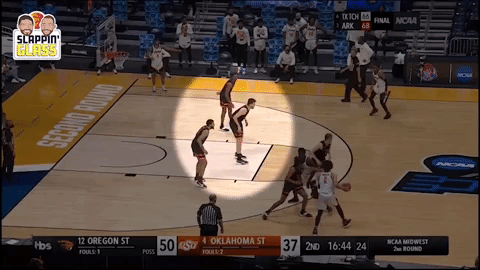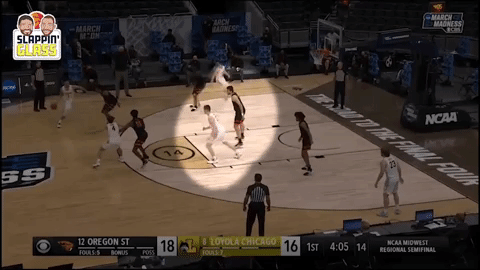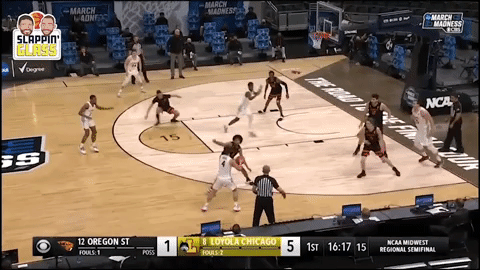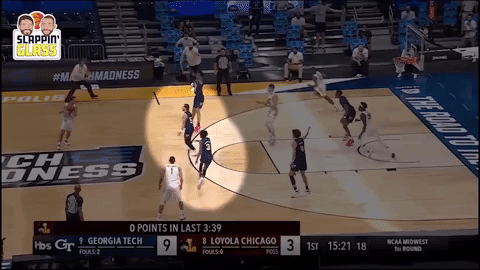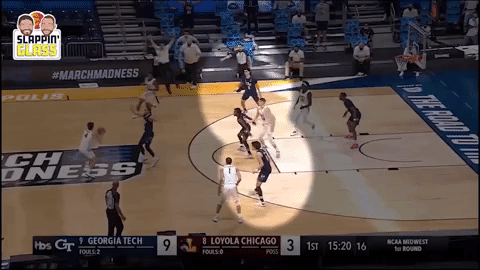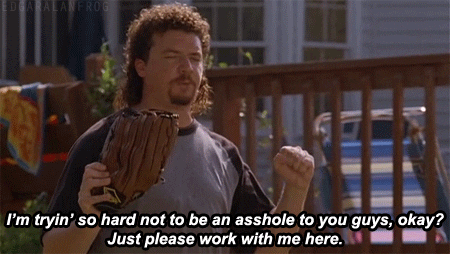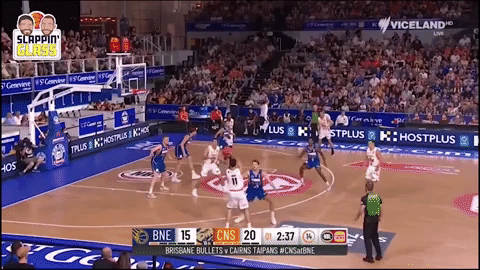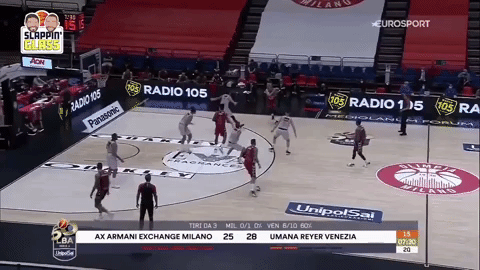Rise of the Zones
If You Can't Beat Em', Zone Em'
Welcome to our “Sunday Mornin’ Newsletter”, where we explore the best ideas, strategies, and coaches from around the world of basketball.
Today’s edition will cover:
Rise of the Zones: A look at interesting zones from around the world
Jay Bilas Podcast Insights
Best Sets of the Week
Watch/Read/Think
Let’s dive in…
Rise of the Zones
Zone Defenses are not new, but with the recent March Madness success of teams like Syracuse, Oregon State, USC, Oklahoma State, and Oregon, along with NBA teams like the Hornets, Heat, and Jazz, AND a host of international teams at all levels, Zones are a worthy topic of discussion. From a plain vanilla 2-3 Zone, to a more complex 1-1-3 Matchup, coaches are finding various levels of success with having at least some kind of Zone Defense to throw at opponents as either their main, “fastball” defense, or keeping it in their back pocket for a well-timed “change-up” at some point in the game.
Today we’re going to look at some of the Zones, and more specifically the Zone Concepts, that teams have been using at the NBA, International, and Collegiate level. We’ll also discuss the player make-up of these teams and why they’re running the specific zone in the first place, as well as some of the disadvantages and weak points that come with the chosen zone.
We’ve broken this down into 3 segments:
Rim Protection: How Oregon State and the Utah Jazz focus on rim protection within their zones.
Perimeter Switches and Funnels: How Georgia Tech and Anwil effectively switch, plug, and funnel passes and drives.
The Art of Confusion: How Boston College, Brisbane, and Reyer Venezia add match-up elements in their zones that cause confusion for the offense.
1) Rim Protection
One of the main benefits of a zone defense is that it offers coaches a way to strategically put defenders in a spot on the floor that they choose, instead of letting the offense dictate where those defenders go like in a traditional man to man defense. For Coaches who have a great rim-protecting big on the roster, or a big who struggles as an athlete to guard PNR’s, Pin-Downs, and other complex perimeter actions, placing that big square in the middle of the floor to protect the rim is not a bad option.
For a deeper look at this we’ll turn to the current 2-3 Zone Defensive tactics used by both Oregon State and their 7’1 Center Roman Silva during the NCAA Tournament as well as the Utah Jazz and Rudy Gobert.
Tough Contested Twos
Regardless of the zone alignment, like man to man defense, the Holy Grail of a defensive possession is to 1) Create a Turnover, or 2) Force a contested two point attempt. In the cases of Oregon State and the Jazz, both prefer to keep their rim-protecting/shot-blocking centers close to the rim within their zones and let the other 4 defensive players work to force the offense into contested shots over their Big waiting in the middle of the key…
Supporting Top On-Balls
The other responsibility of the Defensive Big as he protects the rim within the Zone, is offering a “Drop Coverage” type of support during an On-Ball Screen set on the top of the Zone.
Zooming In: This is a common way to guard an On-Ball Screen set on the top defenders of a Zone. The small detail to note here is the type of on-ball in which the big is most needed as a helper, a “Reverse Angle” screen set towards the sideline where (like shown above) there is another offensive player in the corner. When the screen is set toward the short side of the floor most zone defenses would prefer not to use their wing defender to help on the On-Ball because of the easy kick-out opportunity to the corner shooter. Thus, the Big will be used to help in what is essentially “Drop or Ice Coverage” to stunt at the ballhandler while dropping to protect the rim.
As we’ll see more below, most On-Ball screens set on the top of a zone defense that are going toward the wide side of the floor are handled by the top guards/wings of the zone. In those On-Ball situations the Defensive Big will step up to support only if needed.
Guarding a High Post Catch 1 v 1
Outside of contesting all shots in the paint and offering support on Reverse Angle On-Balls, Oregon State and the Jazz are also comfortable with having their bigs match up and play 1 v. 1 on a High Post catch…
Zooming In: We’ll discuss this matchup situation more below, but in the theme of “Rim Protection”, what is advantageous for the defense in these types of 1 v. 1 situations are that 1) the defensive big only has to guard 1 to 2 dribbles max from a player operating from the High Post, making it more likely they can stay in front of them, and 2) referring to the first point above, this is an offensive possession the defense is largely ok with, as these 1 v. 1’s from the High Post often result in the offense taking a tough, contested two.
Corner Vulnerabilities
With a Zone focused on keeping a Defensive Big close to the rim to offer rim protection, one of the areas of weakness comes in the form of “Corner Overloads”. If the offense is able to successfully overload a side of the floor and force a 2 v. 1 situation with a player in the corner, then an offense can find clean looks against a Zone who doesn’t want their middle big to rotate out to the corner…
Overview: Keeping a Big Man close to the rim in a Zone Defense is not a groundbreaking concept, but both Oregon State and the Jazz have found success with keeping their bigs at home and letting the other four players fly around the perimeter and make multiple rotations.
2) Perimeter Stunts, Funnels, and PNR Coverage
Moving onto the four perimeter players, both Georgia Tech and Anwil (Poland) do a great job of switching, plugging, and funneling the ball within their 1-1-3 Zones.
Top Guards - “Out and Home”
We’ll first take a look at the top two guards and their switching, and dropping responsibilities. Here’s a good possession by Georgia Tech…
Zooming In: The above GIF shows the constant activity of the top two guards in the 1-1-3 Zone and gives a hint as to their responsibilities when the ball is in the middle third of the floor. While one guard is “Out”, the other is “Home”, meaning they are dropping to deny/plug at the High Post. A lot of communication is needed from these two guards as they are responsible for both pressuring the ball in the middle third as well as dropping to take away an high post flash at the free throw line.
Wings - “High, Big and Early”
Referring to the same possession above, while the guards are “Out and Home”, the two wings are “Stunting and Funneling” the ball back into the middle third of the floor…
Zooming In: When working in synergy with the Guards, the Stunting and Funneling of the Wings can really making it difficult for the offense to get the ball to the wings, corners, or short corners against the zone. The key here for the wings to be effective is that their stunts must be “high, big and early”. See above how elevated the two wings are on every guard catch, as well as how “big” they are with their hands and feet, dissuading any quick, straight-line passes to the corner. Lastly, it’s important that the stunts come “early”, as a late stunt will leave all kinds of passing and driving lanes open for the offense. This is easier said than done against an offense that effectively moves the ball and bodies through a zone.
Middle On-Ball Coverage
As briefly mentioned in the “Rim Protection” section above, the other advantage a high functioning zone creates is that it can marginalize the traditional PNR by the offense. In the case of Georgia Tech and Anwil, there are a couple of different ways the top two guards will handle the On-ball. The first, is for the defender guarding the ball to sprint and meet the ballhandler on the other side of the screen while the other top guard drops back to the High Post to discourage any drop-down pass after the on-ball…
The other way the top guards can handle the On-Ball is to “Switch and Drop”. In this instance, instead of going under the screen like above and keeping the same defender on the ball, the guards will switch who takes the ball while the other quickly drops to the free throw line…
Zooming In: A couple of details when teaching/looking at the actions above…
The “Sprint Under” coverage is run with the On-Ball going toward the middle of the floor, while the “Switch and Drop” coverage is run on a “Reverse Angle Screen” going toward the short side of the floor. Coaches can decide how, when, and in what situation they’d prefer to use the various PNR coverages. Some of those decisions will depend on who the offensive player with the ball is and their skillset. For example, “Sprinting Under” Steph Curry would be less than ideal.
The quick drop to the free throw line in both actions is really important because it limits the likeliness of a “Short Roll” type of pass after the On-Ball screen. Important to note though, that the defender does not want to get caught too low on the drop as savvy offenses will quickly throw the ball back to the area they just left to a shooter filling that spot. If the defender is caught too low it’s difficult to recover back to the shooter.
3) Confusing the Offense
The last concept we’ve seen from Zone Defenses in different parts of the world, is creating a situation where it’s difficult for the offense to tell if the defense is in Man or Zone. This confusion often leads to difficult shots by the offense, a disruption of offensive flow and rhythm, and tense timeouts between Head Coaches and their staffs, with the Head Coach asking why they were not made aware their opponent ran this type of defense.
{ Zone to Man Switches }
Boston College/Brisbane High Post Trigger
The first interesting concept a zone can use is to switch from a Zone to a Man defense is on a trigger somewhere within the possession. A common trigger for this is matching up with a man on a High Post catch. Boston College utilized this well…
As well as Brisbane in Australia…
Zooming In: This action is similar to the “Protecting the Rim” segment above, where Oregon State and the Jazz are comfortable with an offensive big going 1 v. 1 from the High Post. With Boston College and Brisbane above, the quick matchup on the High Post catch can really stagnate an offense that believes the defense is still in their normal zone coverage.
Reyer Venezia - Zone to Man on 2nd Pass
Another “Zone to Man” tactic used time to time by Coach Walter De Raffaele and Reyer Venezia, is a switch from Zone to Man on the 2nd pass of a possession.
In this strategy the Zone focuses on the ball NOT getting to the High Post so they can match up on the 2nd perimeter pass.
Zooming In: Much like the BC strategy above, the 2nd perimeter pass is often an easy matchup for the defense. Packing in the zone for two passes and then switching to a man also helps eat up a good amount of shot clock and the offense is forced to run limited action instead of having time for more intricate play designs that are harder for the defense guard.
For a continued breakdown of all these Zone concepts, here is our newest YouTube video…
Jay Bilas on Advancing the Game
Like so many in our game, we’re big fans of former Duke Blue Devil and current ESPN analyst, Jay Bilas, and his extended knowledge of concepts both on and off the court. So, we were thrilled to have him as a guest on the podcast this week to discuss exactly that. We explored:
What great coaches and organizations do well in terms of their approach to process, long-term vision, and delegation.
A Coach’s Temperament and how it affects players during stress/crunch-time
Teaching, Attacking, and the Evolution of Zone Defenses
“Start, Sub, or Sit?!”
The best investment Jay has made in his career
And much more
You can download the full episode here
Best Sets of the Week
Some of the best we saw in the week that was, including Bayern Munich (Euroleague), Nymburk (Czech), Loyola Chicago (NCAA), Barcelona (Euroleague), Miami Heat and Fenerbahce (Euroleague).
Watch, Read, Think
Some teams we enjoyed watching:
South Carolina Women (NCAA D1)
ERA Basketball Nymburk (Czech National League)
Oral Roberts (NCAA D1)
Reads:
And a quote we’re thinking about:
“Most people resist change, even when it promises to be for the better. But change will come, and if you acknowledge this simple but indisputable fact of life, and understand that you must adjust to all change, then you will have a head start.” - Arthur Ashe
Thank you for reading and have a great week coaching. You can help us grow the newsletter by sharing it here…
Thanks!
Dan and Pat


